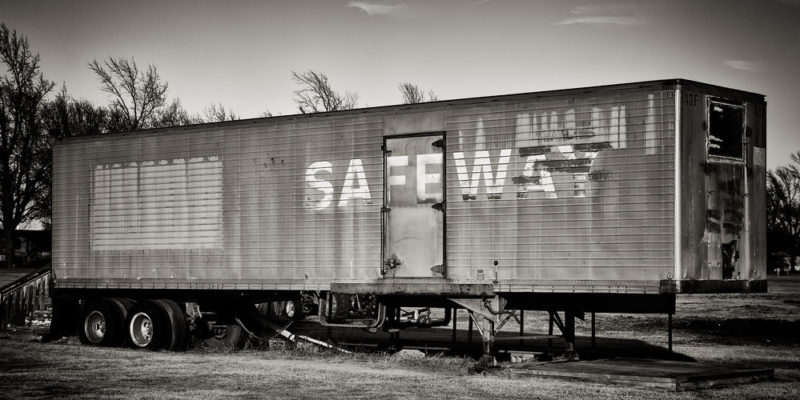One of the more interesting aspects of this new store concept the company is opening next month, where shoppers can check in by scanning an app, pick up their items, and walk out—no checkout lines, no fumbling with debit cards. (Back in my day, we called it shoplifting.) In essence, Amazon’s answer to solving issues of management and human resources is to eliminate the human resource altogether. I’ll leave the debate on what it means for human interactions for another time. But after an experience I had at Safeway last weekend, this elimination of the checkout line bottleneck doesn’t seem entirely like a bad thing.
I just dropped in to pick up a few items, which went just fine. Once I reached the checkout line, however—you know, the part where you give them your money, kind of the point of being in business—that’s when things turned ugly. Of the multiple checkstands in the store, only about half were open. They had even turned off a handful of the self-checkout kiosks, which makes no sense. Regardless, the lines reached halfway to the back of the store. And they were hardly moving.
So I walked.
Doing the math—had I stayed, it would have taken me close to half an hour to pay for some fruit, a couple bags of carrots, and a package of tortillas. Had I not experienced this same issue before, I may have given Safeway the benefit of the doubt. But the company’s managers apparently keep checkout staff low on weekend afternoons. Whether it’s to save money or they just can’t find good help these days, I don’t know. But it hurts them in the long run.
It comes down to this: Safeway does not respect its customers’ time. I could have waited, but waiting would have cost me the excitement of my son’s soccer game. For others it could have been the Seahawks, or a missed start time at the racquetball court, or enjoying the last almost-warm vestiges of sunlight. Maybe because it’s the largest grocery chain in the country its leaders don’t feel the pressure to innovate. Or perhaps because grocery margins are so thin they just don’t care.
Companies are starting to wake up to the idea that maybe Nordstrom’s got it right: if they invest in ensuring that their customers’ shopping experience leaves them with a positive feeling, they will more likely want to come back. To spend far more time in line than the actual gathering of my goods does not a good experience make.
Amazon, understandably, gets that our time is valuable and has long seen time spent on any given task as one of its key performance indicators. The checkout bottleneck clearly does not pass that test, so they’ve decided to experiment with eliminating that bottleneck entirely. Should this experience be successful, we clearly need to take any loss of jobs into account. Given my Safeway experience, however, maybe this experiment gets rid of the wrong people. Perhaps it will take enough of us to walk away from our carts—or the popularity of Amazon’s humanless store—to make Safeway pay attention.
Joel Magalnick is the founder of The Refined Story, a consulting practice that focuses on helping companies grab of hold of their editorial potential. He also teaches the professional business course Stop Writing Crap, which he will happily bring to your own conference room. Find him online at www.refinedstory.com.




